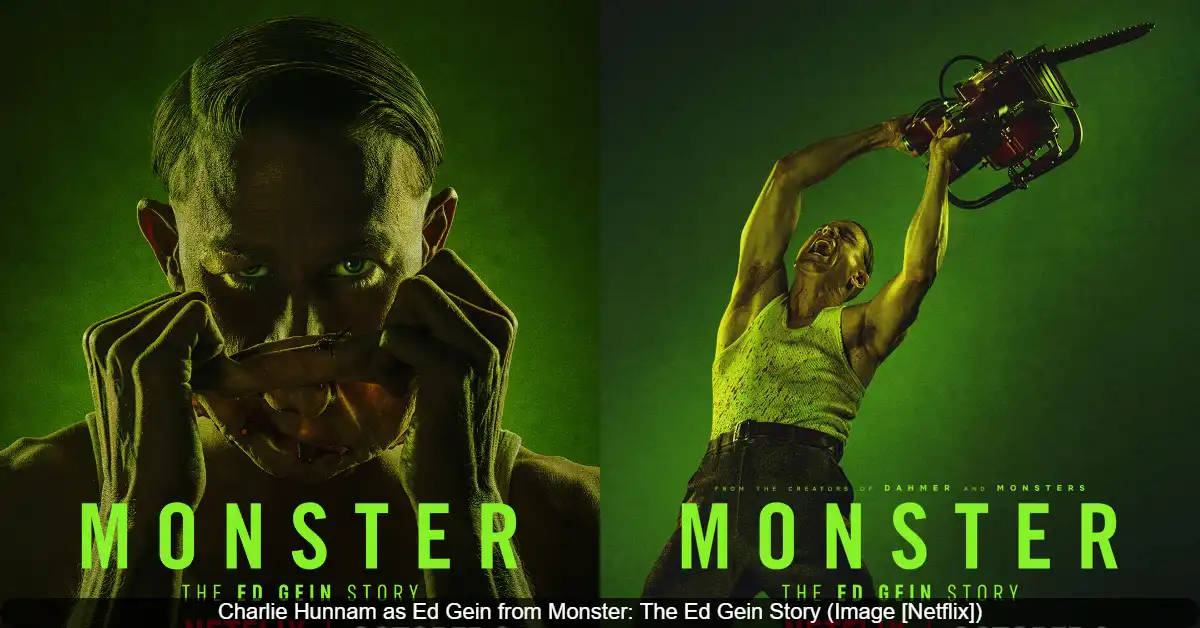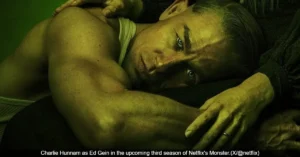The new Netflix series Monster: The Ed Gein Story shows the notorious killer committing a shocking family crime, leaving many viewers to ask a pressing question: did Ed Gein really kill his brother, Henry? The show presents a clear and dramatic version of events, but the true story is more mysterious. The real-life facts are less certain, creating a historical puzzle that the series solves with its own creative interpretation.
What “Monster: The Ed Gein Story” Shows
In the series, the relationship between Ed Gein and his older brother, Henry, is tense. Henry is shown as wanting to escape their controlling mother, Augusta. He plans to leave the family farm and marry a woman his mother dislikes. In a crucial scene, Henry confronts Ed in a barn, calling their mother a “sick woman” and urging Ed to leave with him. Ed, who idolizes his mother, becomes enraged. The show depicts Ed fatally striking Henry with a log. He then disposes of the body by dragging it into a marsh and starting a fire, making the death look like a tragic accident.
The Real-Life Mystery of Henry Gein’s Death
In reality, what happened to Henry Gein is an unresolved mystery. The single indisputable fact is that Henry Gein died on May 16, 1944. The official story is that the brothers were fighting a fire on marshland near their Wisconsin farm when they became separated. Ed reported Henry missing and later led a search party directly to his brother’s body. The county coroner officially listed the cause of death as asphyxiation, and no autopsy was performed. At the time, police dismissed the possibility of foul play.
However, investigators noted some odd details. Henry’s body showed no burn marks, and his clothes were not damaged by the fire. This seemed to contradict the story of him being caught in the blaze. Furthermore, biographer Harold Schechter wrote in his book “Deviant” that Henry had unusual bruises on his head. Despite these suspicious clues, no official investigation was conducted, and the death was ruled an accident.
“Several odd things immediately struck the searchers. First, though the corpse was stretched out on a scorched piece of ground, there were no signs that Henry had been injured by the flames. His clothes were soot-covered but otherwise undamaged,” wrote true crime author Harold Schechter.
Why the Show’s Version Makes a Creative Choice
The series makes a definitive creative choice by showing Ed as his brother’s killer. This decision highlights a key theme of the season: the making of a monster. The show explores how Ed’s twisted relationship with his mother and his isolated life warped his mind. By having Ed kill Henry for criticizing their mother, the show powerfully demonstrates the depth of his obsession and his willingness to eliminate anyone who threatened the distorted world his mother built.

Charlie Hunnam, the actor who plays Ed Gein, studied the role deeply. He was able to listen to a rare audio tape of the real Gein to help create his performance.
“He really contained these multitudes of tone and subject matter,” said co-creator Ian Brennan. “We left no stone unturned. We really painted as big of a picture as we possibly could have.”
The Aftermath and Ed Gein’s Confirmed Crimes
Henry’s death left Ed alone with his mother, Augusta, who died the following year in 1945. This isolation sent Ed into a deep mental decline. While he never confessed to killing his brother, he later admitted to more gruesome crimes. In 1957, when police investigated the disappearance of hardware store owner Bernice Worden, they discovered a house of horrors on Gein’s farm. They found Worden’s body and learned that Gein had been exhuming corpses from graveyards. He used the bodies to create macabre objects, including furniture upholstered with human skin, a belt made from human nipples, and masks made from the faces of the dead.
Ed Gein ultimately confessed to murdering two women: Bernice Worden and Mary Hogan, a tavern owner. He was found legally insane and spent the rest of his life in psychiatric institutions until his death in 1984. The mystery of his brother’s death remains officially unsolved, but as the Netflix series suggests, it may have been the first step on his path to becoming one of America’s most infamous killers.
Also Read: The True Story of Ed Gein and Adeline Watkins: Fact vs. Netflix Fiction
Credits: Netflix tudum











